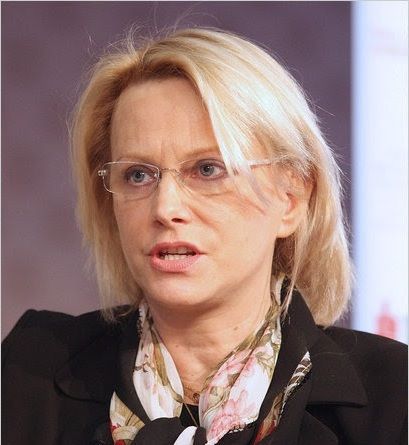
Emerging economies gain for now, as long as developed economies stick to monetary expansion

By Piroska Nagy-Mohacsi, Programme Director and Senior Fellow at the Institute of Global Affairs, London School of Economics.
London – Central banking in emerging markets has undergone a quiet revolution during the COVID-19 pandemic. Unlike in past crises, they have been able to mimic what central banks in advanced economies have been implementing: counter-cyclical policies with quantitative easing (QE), local-currency asset purchases, interest-rate cuts, and monetization of government deficits.
In the past, such policies would have fueled inflation and downward exchange-rate pressure. Not so this time. With the exception of a few central banks that were already in trouble before the pandemic, emerging-market central banks have been able to use QE to create more room to manoeuvre in responding to the crisis.
Monetary policies in the advanced economies enabled this change. Their own QE programs have had positive spillover effects, and they have expanded their currency swaps and foreign exchange repurchase (repo) operations in response to the crisis. Among the measures taken by the globally systemic central banks (GSCBs), the US Federal Reserve’s response has been the most important, but swaps and repos by the European Central Bank (ECB) and the People’s Bank of China’s (PBOC) have also had a significant impact at the regional level.
The effects of interest-rate cuts and huge liquidity injections in advanced economies have reached emerging markets as a result of the global search for yield. After an initial market stumble in March, capital flows returned to emerging markets, which have seen high debt issuance in subsequent months. Emerging markets have also been able to reduce their interest rates, and their central banks have started issuing domestic-currency-denominated assets in cases where the market is sufficiently large.
Meanwhile, the massive expansion of currency swaps by GSCBs has eased exchange-rate pressures. These swap lines act as safety nets to forestall foreign-currency shortages in domestic markets. Early in the pandemic, the Fed reactivated its standing swap arrangements with the ECB, the Bank of Canada, the Bank of England, the Bank of Japan, and the Swiss National Bank, while also extending their maturities. It then followed up by providing swap lines to the central banks of Australia, Brazil, Denmark, South Korea, Mexico, New Zealand, Norway, Singapore, and Sweden.
While the Fed deployed similar measures during the global financial crisis a decade ago, it has now gone much further. At the end of March, it started offering a new additional temporary repo facility for foreign and international monetary authorities (FIMAs). This arrangement allows central banks and public monetary institutions around the world to use their existing stock of US Treasury bills as a channel for accessing US dollar liquidity.
Although repos are not genuine currency swaps (because the FIMAs must already have dollar-denominated assets on hand as collateral), they have nonetheless proven to be a powerful source of market confidence. And because the mere availability of repos can be enough to reassure markets, they do not need to be used in many cases.
Moreover, repos can serve as a precursor to true currency-swap arrangements, following the model of the ECB’s repo operations with Poland and Hungary in 2009. In the current crisis, the ECB and the PBOC have both expanded swap lines and repos within their monetary spheres of influence, allowing for a sharp reduction in exchange-rate risks in emerging markets.
Emerging-market central banks’ additional room to maneuver will last for as long as advanced economies’ monetary policies remain sufficiently expansionary. The chances for that are high in the near and medium term, because advanced-economy central banks have been unable (for various reasons) fully to exit from the QE that they launched a decade ago, even after growth and employment recovered.
Now, given the pandemic and the deep economic recession that it has caused, there is effectively no end in sight for QE. Several central banks, moreover, are formally committed to keeping interest rates low or even negative, and new central-bank digital currencies could make such policies relatively easy to implement.
The upshot for emerging-market central banks, then, is that they will most likely continue to enjoy monetary-policy spillovers from the GSBCs for the foreseeable future. But there are limits to the benefits of this policy freedom. Many emerging-market central banks may soon experience unintended consequences in terms of financial stability and governance.
After all, QE and a prolonged recession will inevitably hit the balance sheets of companies, households, and eventually banks. When that happens, bankruptcies and non-performing loans will soar, and governments in emerging markets will find that they still have much less fiscal space than their advanced-economy counterparts do for addressing such problems.
Governance issues also are likely to surface. Central-bank asset purchases that go beyond government bonds will raise concerns about transparency and accountability. In fact, this may well become an issue in advanced economies, too (though they will still have the advantage of more fiscal space and robust institutional arrangements).
One way or another, emerging-market vulnerabilities are likely to become apparent soon in various domains of domestic financial stability and governance. Policymakers in these countries would do well to keep their guard up.
Copyright: Project Syndicate, 2020.
www.project-syndicate.org













































